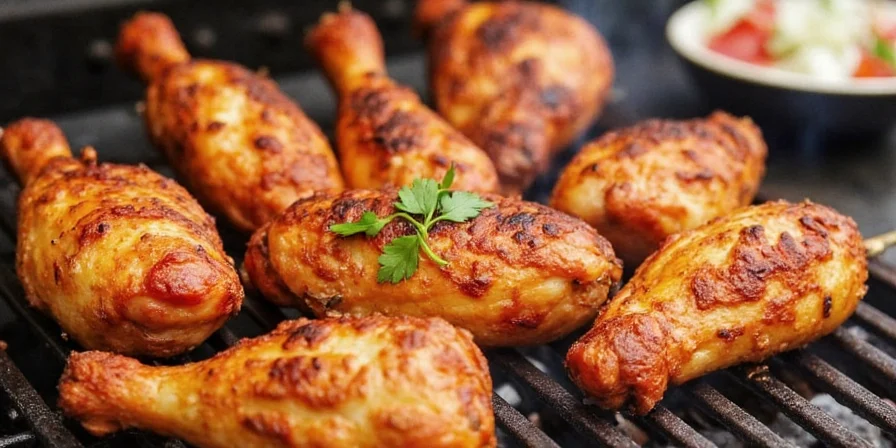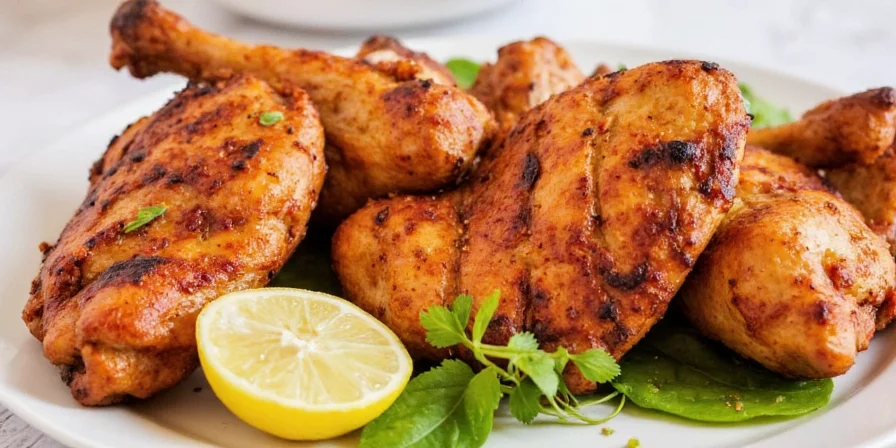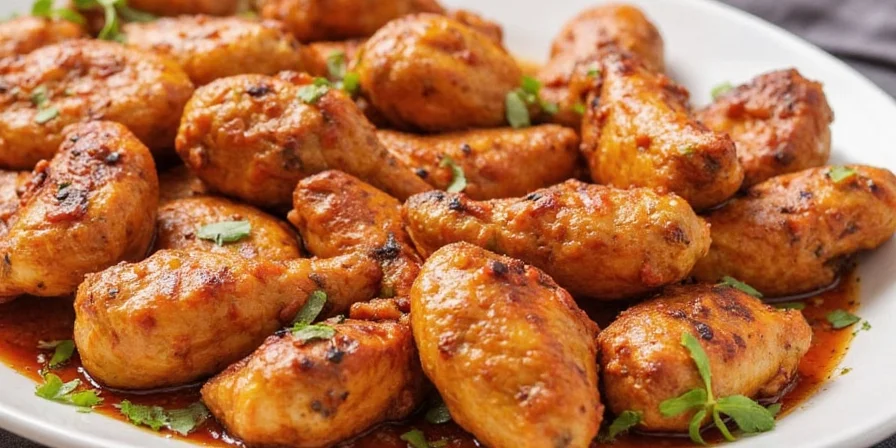Spice Up Your Grill: 10 Tandoori Chicken Seasoning Mix Secrets You Never Knew!
Table of Contents
- Introduction
- What is Tandoori Chicken Seasoning Mix?
- Top 10 Tandoori Chicken Seasoning Tips
- Spice Mix Breakdown & Flavor Profiles
- Visual Spice Comparison Table
- Pro Hacks for Perfect Tandoori Chicken Every Time
- Conclusion
Introduction: The Smoke, the Spice, the Sensation
Imagine biting into a piece of chicken that’s smoky, slightly tangy, and bursting with earthy warmth. That’s tandoori chicken in a nutshell — or rather, in a clay oven. At the heart of this iconic dish lies one unsung hero: the tandoori chicken seasoning mix.

But how much do you really know about this fiery fusion of spices? Whether you’re a seasoned chef or a weekend grill warrior, it’s time to geek out over Global Spice Traditions and uncover what makes this spice blend so magical.
What Exactly Is Tandoori Chicken Seasoning Mix?
Tandoori seasoning is not just a random sprinkle of red powder. It's a carefully balanced blend of aromatic spices designed to infuse meat with deep color, bold flavor, and a hint of heat — all while complementing the charred goodness from the tandoor (clay oven).
The base typically includes:
- Kashmiri chili powder (for vibrant red color without too much heat)
- Cumin
- Coriander
- Garam masala
- Turmeric
- Garlic and ginger paste
- Salt
- Lemon juice or vinegar
- Yogurt (as a marinade base)
Each region has its own twist, but these core elements create the foundation of that signature tandoori taste.

Top 10 Tandoori Chicken Seasoning Tips (Because Even Chicken Deserves Five-Star Service)
- Fresh Spices Are King: Ground spices lose potency after 6 months. If your cumin smells like dust, toss it out!
- Don’t Skip the Yogurt: It tenderizes the chicken and helps the spices cling better than any glue.
- Marinate Overnight: Letting flavors meld overnight is like sending your chicken to a luxury spa — it wakes up refreshed and deeply infused.
- Add Lemon Zest: For brightness and contrast, add grated lemon zest to your mix.
- Use Whole Spices When Possible: Toasting and grinding whole cumin seeds gives a richer aroma than pre-ground versions.
- Paprika vs. Kashmiri Chili: Use Kashmiri chili if you want color without heat. Paprika adds sweetness but lacks the fire.
- Balance Sweetness: A pinch of sugar balances sour notes from yogurt and lemon.
- Smoked Paprika = Game-Changer: Adds that elusive “tandoor” smokiness even when grilling at home.
- Mace or Nutmeg? Yes Please: These warm, nutty notes round out the spice blend beautifully.
- Let It Rest Before Grilling: After marinating, let the chicken sit at room temperature for 30 minutes before cooking for more even cooking.

The Flavor Profile Deep Dive: What’s Going On Inside That Spice Jar?
Let’s take a closer look at each component of the tandoori chicken seasoning mix and why they matter:
| Spice | Flavor Contribution | Why It Matters |
|---|---|---|
| Kashmiri Chili Powder | Bright red color, mild heat | Provides the signature look without burning your tongue off |
| Cumin | Earthy, nutty, slightly bitter | The backbone of Indian spice blends |
| Coriander Powder | Woody, citrusy, floral | Softens the overall blend with sweet warmth |
| Garam Masala | Complex, spicy, sweet | Brings depth and warmth, like a hug for your tastebuds |
| Turmeric | Earth, wood, musk | Anti-inflammatory powerhouse and golden hue provider |
| Garlic & Ginger Paste | Pungent, sharp, spicy-sweet | Nature’s MSG — enhances umami and ties everything together |

Spice Showdown: Store-Bought vs. Homemade Tandoori Mix
If you're short on time, store-bought mixes can be a lifesaver. But are they worth it? Here’s a quick side-by-side comparison:
| Feature | Store-Bought Mix | Homemade Mix |
|---|---|---|
| Flavor Freshness | ⭐⭐☆ | ⭐⭐⭐⭐⭐ |
| Customization | ⭐ | ⭐⭐⭐⭐⭐ |
| Texture | Consistent | Can vary (often better mouthfeel) |
| Cost | Cheap | A bit pricier upfront, but lasts longer |
| Health Considerations | May contain preservatives or fillers | Total control over ingredients |

Pro-Level Hacks for Mastering Tandoori Chicken
Ready to elevate your tandoori game beyond basic? Try these insider tricks:
- Charcoal Finish at Home: Place a small bowl of lit charcoal inside the oven or under the broiler to mimic that smoky tandoor vibe.
- Layer Flavors: Add a drizzle of mustard oil or ghee before grilling for extra depth.
- Double Marinade Method: First, marinate with salt and lemon; second, add yogurt-based mix. This doubles flavor penetration.
- Toast Your Own Spices: Dry roast cumin, coriander, and cloves for a fresher, deeper flavor before grinding.
- Ditch the Skewers Sometimes: Try roasting whole legs or thighs for juicier results — perfect for lazy Sundays.

Conclusion: Spice Like a Pro, Grill Like a Legend
Tandoori chicken seasoning mix isn't just a blend — it’s a passport to a world of bold flavors and cultural traditions. Whether you're grilling for friends or experimenting solo, mastering this mix opens doors to culinary creativity.
From choosing fresh spices to layering flavors and even faking a clay oven at home, there’s always room to innovate. So next time you reach for that jar of spices, remember: every grain tells a story, and your chicken deserves nothing less than greatness.
Now go forth — season boldly, grill passionately, and savor every smoky bite.











 浙公网安备
33010002000092号
浙公网安备
33010002000092号 浙B2-20120091-4
浙B2-20120091-4